Gabriele Franch
GPTCast: a weather language model for precipitation nowcasting
Jul 02, 2024Abstract:This work introduces GPTCast, a generative deep-learning method for ensemble nowcast of radar-based precipitation, inspired by advancements in large language models (LLMs). We employ a GPT model as a forecaster to learn spatiotemporal precipitation dynamics using tokenized radar images. The tokenizer is based on a Quantized Variational Autoencoder featuring a novel reconstruction loss tailored for the skewed distribution of precipitation that promotes faithful reconstruction of high rainfall rates. The approach produces realistic ensemble forecasts and provides probabilistic outputs with accurate uncertainty estimation. The model is trained without resorting to randomness, all variability is learned solely from the data and exposed by model at inference for ensemble generation. We train and test GPTCast using a 6-year radar dataset over the Emilia-Romagna region in Northern Italy, showing superior results compared to state-of-the-art ensemble extrapolation methods.
Can AI be enabled to dynamical downscaling? Training a Latent Diffusion Model to mimic km-scale COSMO-CLM downscaling of ERA5 over Italy
Jun 19, 2024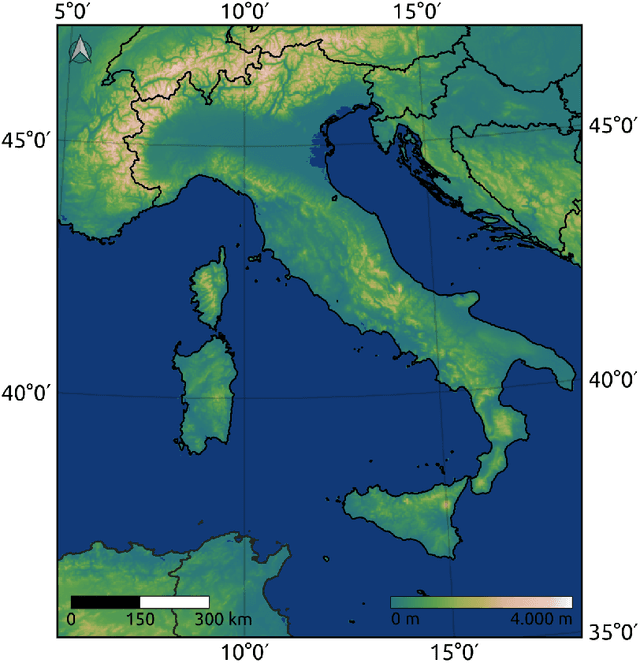
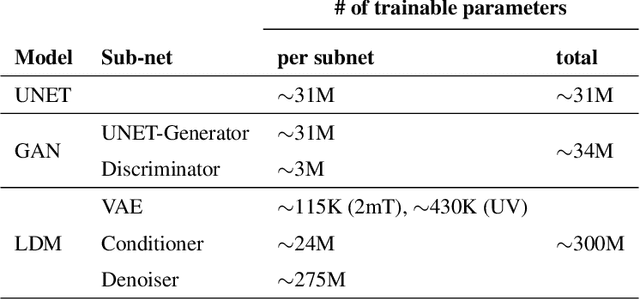
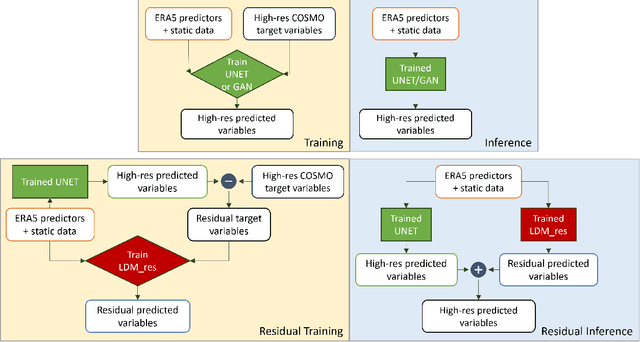
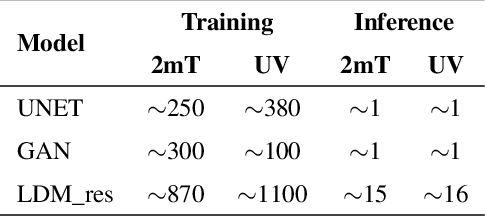
Abstract:Downscaling techniques are one of the most prominent applications of Deep Learning (DL) in Earth System Modeling. A robust DL downscaling model can generate high-resolution fields from coarse-scale numerical model simulations, saving the timely and resourceful applications of regional/local models. Additionally, generative DL models have the potential to provide uncertainty information, by generating ensemble-like scenario pools, a task that is computationally prohibitive for traditional numerical simulations. In this study, we apply a Latent Diffusion Model (LDM) to downscale ERA5 data over Italy up to a resolution of 2 km. The high-resolution target data consists of results from a high-resolution dynamical downscaling performed with COSMO-CLM. Our goal is to demonstrate that recent advancements in generative modeling enable DL-based models to deliver results comparable to those of numerical dynamical downscaling models, given the same input data (i.e., ERA5 data), preserving the realism of fine-scale features and flow characteristics. The training and testing database consists of hourly data from 2000 to 2020. The target variables of this study are 2-m temperature and 10-m horizontal wind components. A selection of predictors from ERA5 is used as input to the LDM, and a residual approach against a reference UNET is leveraged in applying the LDM. The performance of the generative LDM is compared with reference baselines of increasing complexity: quadratic interpolation of ERA5, a UNET, and a Generative Adversarial Network (GAN) built on the same reference UNET. Results highlight the improvements introduced by the LDM architecture and the residual approach over these baselines. The models are evaluated on a yearly test dataset, assessing the models' performance through deterministic metrics, spatial distribution of errors, and reconstruction of frequency and power spectra distributions.
Latent diffusion models for generative precipitation nowcasting with accurate uncertainty quantification
Apr 25, 2023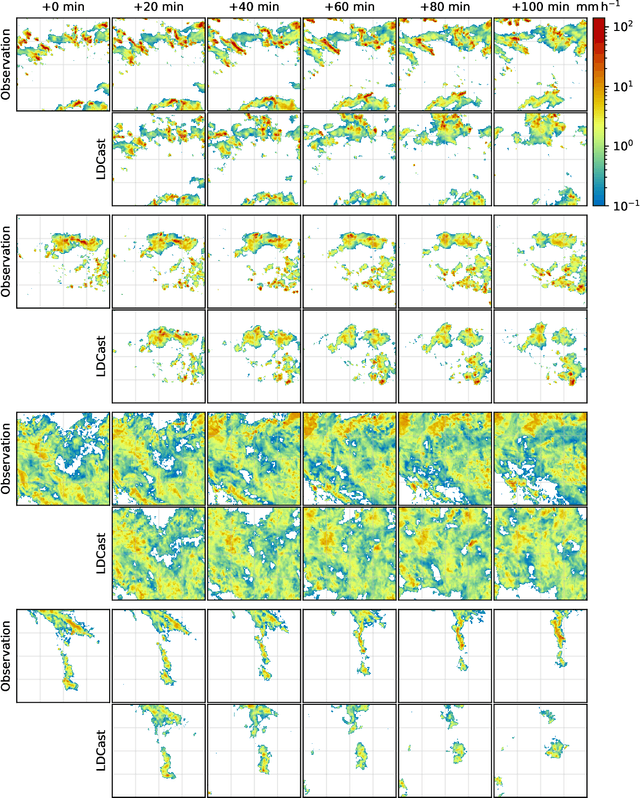
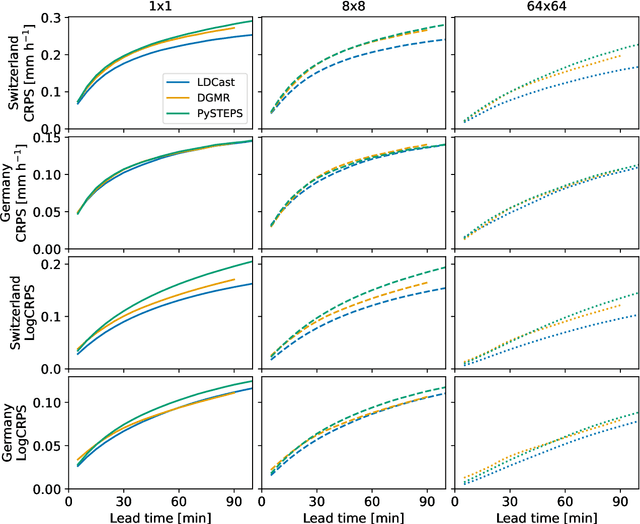
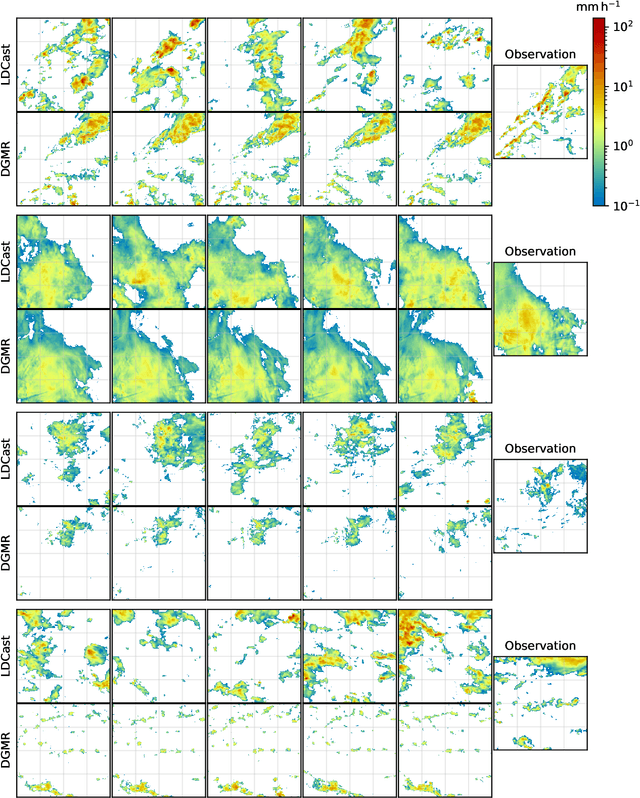
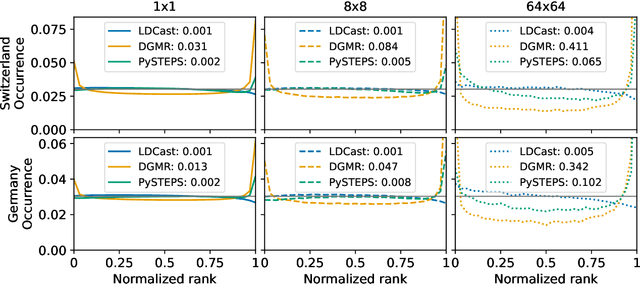
Abstract:Diffusion models have been widely adopted in image generation, producing higher-quality and more diverse samples than generative adversarial networks (GANs). We introduce a latent diffusion model (LDM) for precipitation nowcasting - short-term forecasting based on the latest observational data. The LDM is more stable and requires less computation to train than GANs, albeit with more computationally expensive generation. We benchmark it against the GAN-based Deep Generative Models of Rainfall (DGMR) and a statistical model, PySTEPS. The LDM produces more accurate precipitation predictions, while the comparisons are more mixed when predicting whether the precipitation exceeds predefined thresholds. The clearest advantage of the LDM is that it generates more diverse predictions than DGMR or PySTEPS. Rank distribution tests indicate that the distribution of samples from the LDM accurately reflects the uncertainty of the predictions. Thus, LDMs are promising for any applications where uncertainty quantification is important, such as weather and climate.
MASS-UMAP: Fast and accurate analog ensemble search in weather radar archive
Oct 01, 2019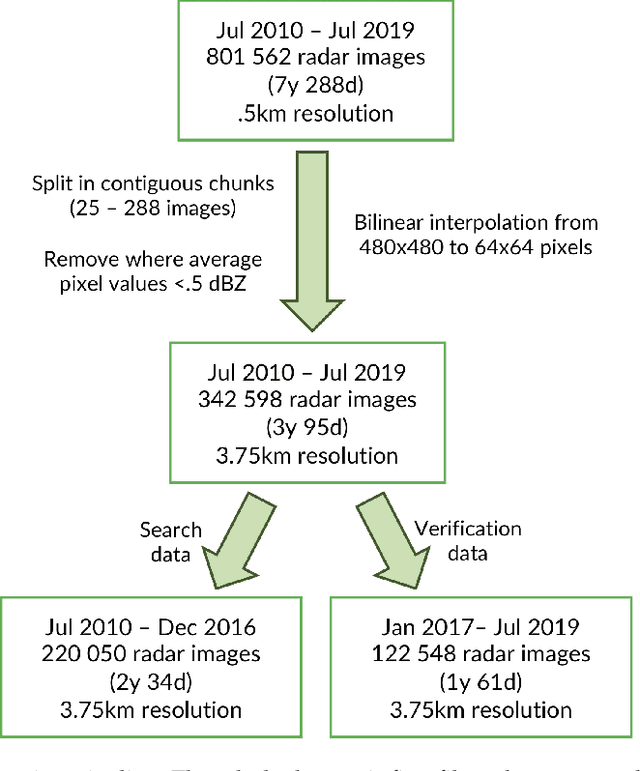

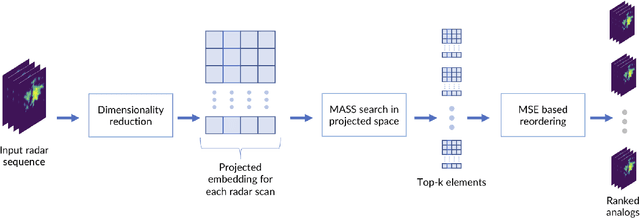
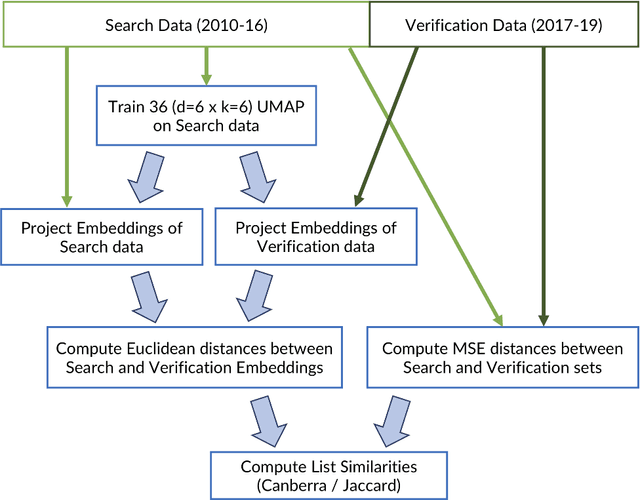
Abstract:The use of analogs - similar weather patterns - for weather forecasting and analysis is an established method in meteorology. The most challenging aspect of using this approach in the context of operational radar applications is to be able to perform a fast and accurate search for similar spatiotemporal precipitation patterns in a large archive of historical records. In this context, sequential pairwise search is too slow and computationally expensive. Here we propose an architecture to significantly speed-up spatiotemporal analog retrieval by combining nonlinear geometric dimensionality reduction (UMAP) with the fastest known Euclidean search algorithm for time series (MASS) to find radar analogs in constant time, independently of the desired temporal length to match and the number of extracted analogs. We compare UMAP with Principal component analysis (PCA) and show that UMAP outperforms PCA for spatial MSE analog search with proper settings. Moreover, we show that MASS is 20 times faster than brute force search on the UMAP embeddings space. We test the architecture on a real dataset and show that it enables precise and fast operational analog ensemble search through more than 2 years of radar archive in less than 5 seconds on a single workstation.
 Add to Chrome
Add to Chrome Add to Firefox
Add to Firefox Add to Edge
Add to Edge